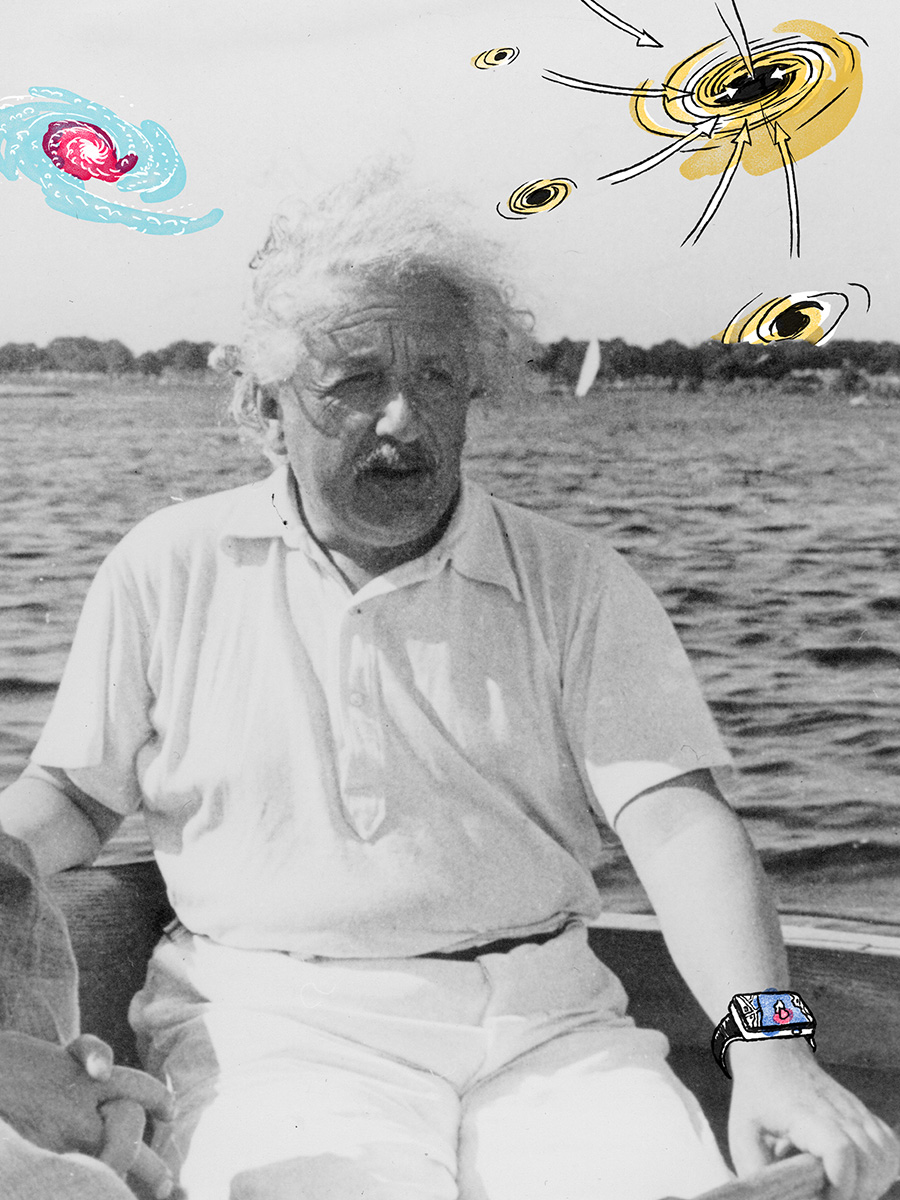
Albert Einstein on a sailing trip in 1934
(Illustration: Oculus Illustration / ETH Library Zurich, Image Archive)
“Grossmann, you have to help me or I’ll go mad.” This is how Einstein is said to have greeted his erstwhile saviour from his student days when they met again for the first time after he arrived in Zurich. During his time in Bern and Prague, Einstein had already formulated the key physical concepts for his general theory of relativity. What he was missing was the right way to express it mathematically. In this critical moment, Einstein’s lack of interest in higher mathematics threatened to be his undoing. Thankfully, however, Grossmann – who was now Professor of Mathematics at ETH – was once again there to lend a hand to the desperate Einstein.
Over a period of nine months of extreme exertion and concentration, the two men produced a first draft of the general theory of relativity and gravitation, which was published in 1913 and was very similar to the final version. The equations that Einstein wrote down in his Zurich notebook were more or less correct, but he would only realise their full significance three years later, by which time he was already working as a professor in Berlin. In the end, he left ETH after only a year and a half as he was unable to resist the opportunity to work at the highly regarded Prussian Academy of Sciences. Even the generous offer of a double professorship at the University of Zurich and ETH Zurich in 1918 was not enough to tempt him back to Switzerland.
GPS, lasers and solar cells
Albert Einstein died in April 1955 at the age of 76 in Princeton in the United States, where he had continued his research career from 1933 onwards. However, his revolutionary findings live on in our everyday lives and in scientific research. For example, it is hard to imagine a world without GPS today. It was Einstein who, in his general theory of relativity, anticipated that clocks run more slowly on board satellites than on Earth. If we didn’t take these time differences into account, location information would be out by several kilometres every day.
Furthermore, Einstein’s light-quantum hypothesis and his work on Planck’s theory of radiation set out key principles that would come to be crucial in the development of the now omnipresent laser technology and the generation of electricity using solar cells.
Einstein’s research lives on
“Today’s physics is inconceivable without Einstein. The general theory of relativity is central to our understanding of the world and of the cosmos,” explains Lavinia Heisenberg, who is a professor at ETH’s Institute for Theoretical Physics. Further confirmation of Einstein’s theory has been obtained in recent years: firstly, through the discovery of evidence of gravitational waves, which opens up the possibility of new findings regarding the creation of the universe and its changes. Secondly, an international research team succeeded in making a black hole visible for the first time in the past year. Einstein predicted this phenomenon mathematically, although he did not personally believe in its existence.
Furthermore, cosmologists like Lavinia Heisenberg are still working today on questions that go back to Einstein: for example, scientists are still to clarify whether the theory of relativity also applies to the very small units found in quantum physics. And when it comes to research on the early universe and on black holes, Einstein’s theory leads to singularities which remain unresolved. “These problems will continue to occupy us for many years. Like Newton before him, Einstein isn’t going to drop off the radar any time soon,” says Heisenberg. As it turns out, it proved really worthwhile for that mediocre student when he decided to give physics a try back in 1899. And not just for ETH.